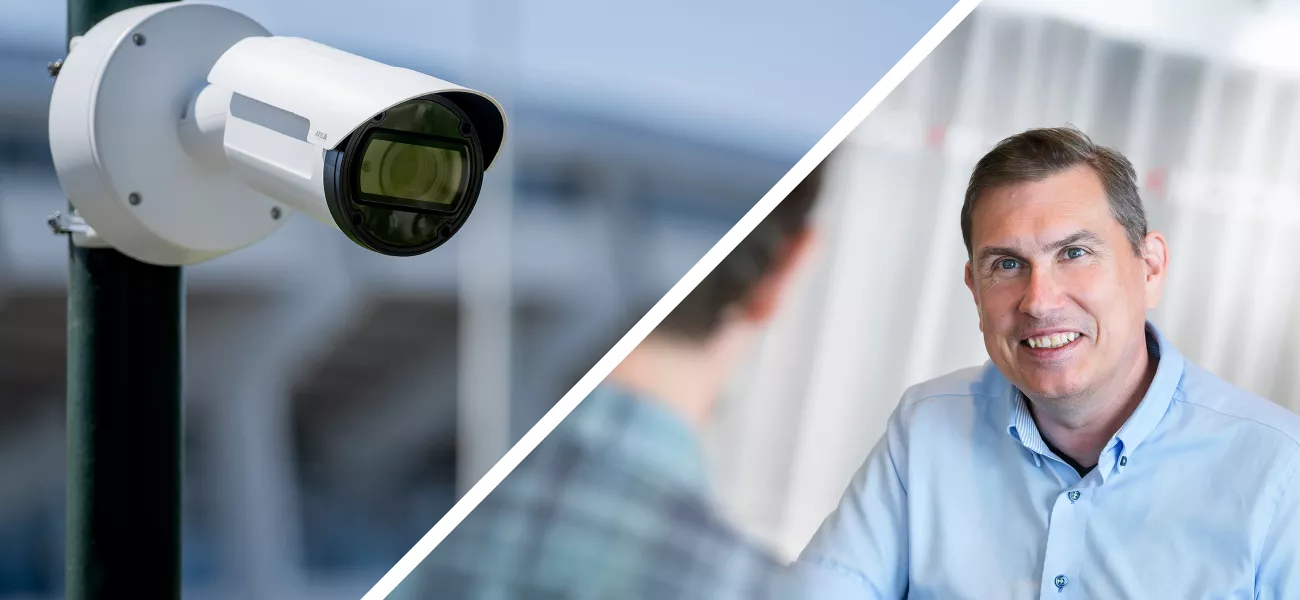
2025 marks 29 years since the invention of the first network camera, the AXIS NetEye 200. Since then, video surveillance technology has evolved dramatically. Now, 8K cameras are generating buzz with their unmatched image quality—but is the industry ready? And more importantly, does 8K offer real-world security benefits that justify its adoption?
The benefits of 8K security cameras
As camera technology advances, 8K resolution is setting a new standard in ultra-high-definition surveillance. But what are the real benefits of 8K security cameras?
Clearer-than-ever images
To understand the significance of 8K cameras, it’s important to put its image quality in perspective. With a resolution of 7680 x 4320 pixels – delivering a staggering 33 million pixels per frame, 30 frames per second – 8K cameras provide four times the resolution 4K. This immense level of detail means that 8K cameras can capture incredibly clear images, making it easier to identify people or objects that would otherwise be hard to make out in lower-resolution footage.
8K cameras for video surveillance
The ultra-high-definition imaging that 8K cameras, like the AXIS Q1809-LE Bullet Camera, offer is invaluable for monitoring large, open spaces such as stadiums, airports, and city centers. Some of the main surveillance benefits?
- Better identification at long range – Details such as faces, license plates, and objects are more recognizable, even from greater distances.
- Improved forensic capabilities – When operators investigate recorded material, 8K allows them to zoom into a scene, getting critical details without losing image quality.
Maximizing 8K performance
Additionally, features like electronic image stabilization help maintain smooth video quality, even in situations where the camera is exposed to vibrations, such as in sports arenas. This functionality not only ensures clear and stable footage but also helps avoid additional bandwidth consumption caused by movement and shake-induced distortions.
For certain applications, it’s clear that 8K has a significant advantage – but that doesn’t mean it’s the most practical fit everywhere.
Key considerations before deploying 8K security cameras
While 8K cameras offer impressive image quality, adopting this technology isn’t just about resolution—it also comes with practical considerations that impact usability, infrastructure, and cost.
Do you need 8K cameras? It depends.
The detail 8K cameras capture can be beneficial in certain scenarios, but, in many cases, 4K resolution is more than sufficient for capturing usable footage. Plus, in certain lighting conditions, 4K cameras may generate more usable footage, thanks to their pixel size and processing capabilities.
Upgrading infrastructure for 8K
Even when there are clear benefits from the extra detail an 8K camera provides, there are some challenges that come with adopting these cameras for video surveillance. More pixels mean more data – a lot more. Even traditional video surveillance systems can struggle with bandwidth and storage limitations. Adding 8K cameras typically requires substantial upgrades to network infrastructure and storage capacity, making for an often expensive and time-consuming undertaking.
And then there’s the availability of compatible monitoring and recording devices. While 8K displays are becoming increasingly common in consumer markets, the same can’t be said for surveillance monitors and recording equipment. As a result, integrating 8K cameras into existing video surveillance may mean rethinking not just cameras, but the entire video ecosystem, adding to the upgrade’s cost and complexity.
So… where do we go from here?
8K as part of a total video surveillance strategy
In environments where capturing minute details at a distance is critical – for example, large-scale facilities or critical infrastructure – the extra resolution can be a significant advantage. At the same time, security decision-makers also need to weigh factors such as infrastructure compatibility, practicality, and cost. In many cases, 4K remains the preferred resolution due to its balance between image quality, storage efficiency, and performance in various lighting conditions.
For security professionals weighing whether to adopt 8K right now, the key questions are:
- What operational challenges do 8K solve that 4K cannot?
- What does your existing infrastructure need in order to support the data and processing demands?
- Does the higher resolution justify the cost of upgrading?
But even when the answer to that last question is “not yet,” the future of video surveillance undoubtedly lies in higher resolutions like 8K.
Looking forward: Gradual and use-case driven adoption
In the near future, the adoption of 8K will likely be gradual and use-case driven, but the trajectory of technological advancement suggests that higher resolutions will play an increasing role in the future of camera surveillance. While the general video surveillance market won’t be as quick to adapt as the large, open, busy facilities where 8K cameras are already proving to be a powerful tool, the groundwork is already being laid for their eventual wider integration. As technology advances and costs decrease, the barriers to adoption will diminish, making 8K cameras a more viable option for increasingly efficient and effective security solutions.
